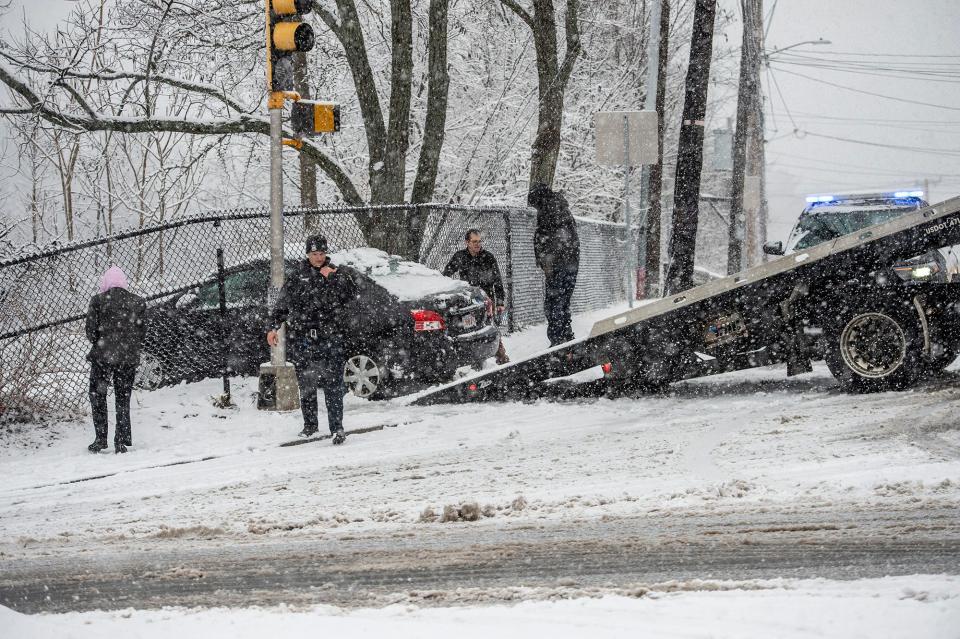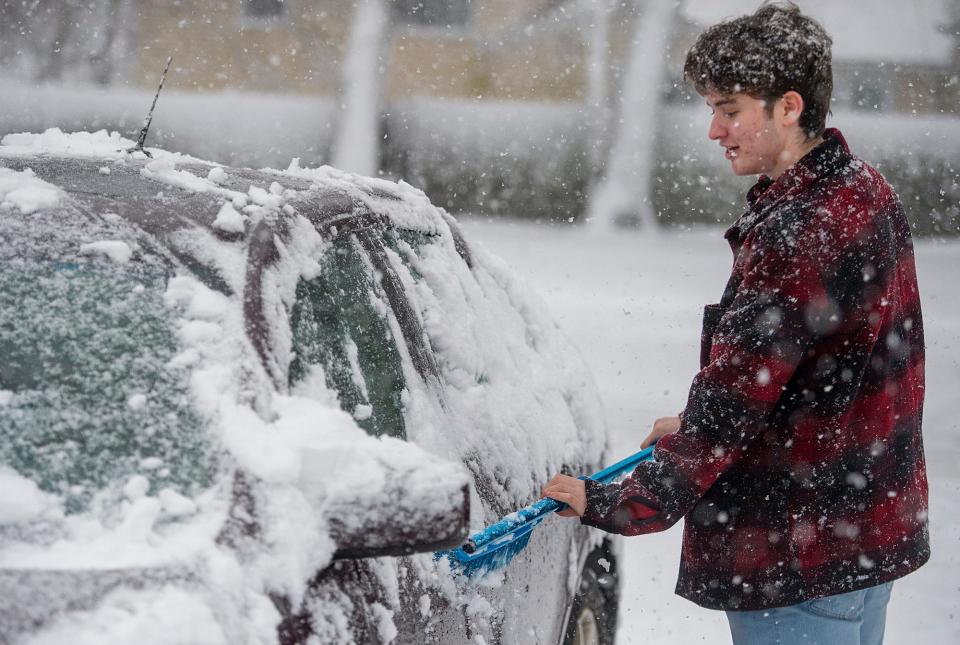It's slippery out there. AAA Northeast offers the following winter driving tips
Officials from AAA Northeast are warning motorists of the increased risks of driving in wintry weather.
“We urge drivers to watch for slippery conditions,” said Mary Maguire, director of public and government affairs, in a statement. “Snow and sleet can cause significant safety problems by reducing visibility and making it difficult to safely maneuver or stop. And if you’re headed to the airport, check with your airline before you leave home.”
With several inches of snow falling in parts of Massachusetts today, many drivers faced snowy and icy road conditions at a moment’s notice. Dangerous winter storms, bad weather and sloppy road conditions are a factor in nearly half a million crashes and more than 2,000 road deaths in an average winter, according to the AAA Foundation for Traffic Safety.

Nearly half of all crashes involving bad weather occur during the winter, AAA said. The organization encourages drivers to always stay prepared by carrying an emergency roadside kit in their vehicles.
AAA offers the following tips while driving in snowy and icy conditions:
Stay home. If you really don’t have to go out, don’t. Even if you can drive well in bad weather, it’s better to avoid taking unnecessary risks.
Drive slowly. Always adjust your speed down to account for lower traction when driving on snow or ice.
Accelerate and decelerate slowly. Apply the gas slowly to regain traction and avoid skids. Don’t try to get moving in a hurry and take time to slow down for a stoplight. Remember: it takes longer to slow down on icy roads.
Increase your following distance. Allow five to six seconds of following distance between your vehicle and any vehicle in front of you. This space allows you time to stop safely if the other driver brakes suddenly.
Know your brakes. Whether you have antilock brakes or not, keep the heel of your foot on the floor and use the ball of your foot to apply firm, steady pressure on the brake pedal. Don’t pump the brakes.
Don’t stop if you can avoid it. There’s a big difference in the amount of inertia it takes to start moving from a full stop versus how much it takes to get moving while still rolling. If you can slow down enough to keep rolling until a traffic light changes, do it.
Don’t power up hills. Applying extra gas on snow-covered roads just starts your wheels spinning. Try to get a little inertia going before you reach the hill and let that inertia carry you to the top. As you reach the crest of the hill, reduce your speed and proceed downhill slowly.
Don’t stop while going up a hill. There’s nothing worse than trying to get moving up a hill on an icy road. Get some inertia going on a flat roadway before you take on the hill.
“More than 40% of motorists do not carry an emergency kit in their vehicle,” said Maguire. “Drivers attempting to brave bad weather should remain cautious and always be prepared by packing an emergency roadside kit.”

AAA recommends keeping the following items in your “emergency kit” for winter driving:
Mobile phone and car charger
First-aid kit
Blankets
Drinking water/snacks for everyone in the car including pets
Flashlight with extra batteries
Rags, paper towels or pre-moistened wipes
Basic toolkit including duct tape and warning devices such as flares or reflectors
Ice scraper/snow brush
Jumper cables/jump pack
Traction aid such as sand, salt or non-clumping cat litter
Tarp, raincoat and gloves
Shovel
AAA Northeast is a nonprofit auto club with 71 offices in Rhode Island, Massachusetts, Connecticut, New Jersey, New Hampshire and New York, providing more than 6 million local AAA members with travel, insurance, finance and auto-related services.
This article originally appeared on MetroWest Daily News: AAA Northeast warns drivers of slippery conditions during winter storm

